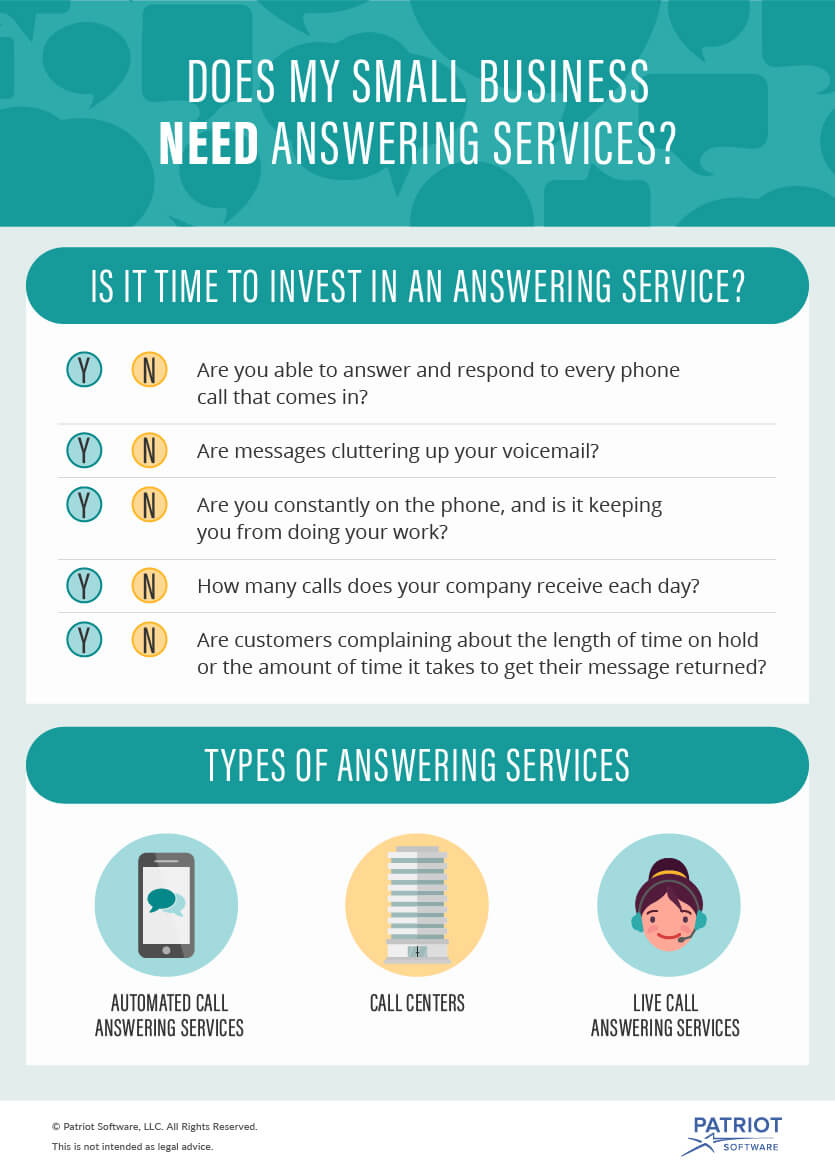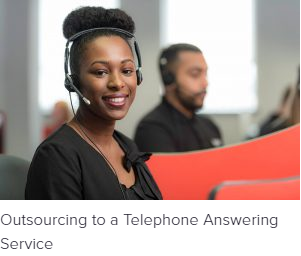All Categories
Featured
Table of Contents
What Are The Best What To Look For In A Phone Answering Service For Your ... Companies?
This device and its followers were created by Sava Jacobson, an electrical engineer with a personal consulting company. While early voice mail used magnetic tape innovation, a lot of modern equipment uses strong state memory storage; some gadgets utilize a combination of both, with a solid-state circuit for the outgoing message and a cassette for the inbound messages.
"toll conserving" listed below) (professional phone answering service). This works if the owner is screening calls and does not want to speak with all callers. In any case after going, the calling celebration ought to be informed about the call having been answered (for the most part this begins the charging), either by some remark of the operator, or by some greeting message of the TAD, or dealt with to non-human callers (e.
This holds specifically for the TADs with digitally stored welcoming messages or for earlier makers (prior to the rise of microcassettes) with a special unlimited loop tape, separate from a 2nd cassette, devoted to recording. There have actually been answer-only gadgets without any recording capabilities, where the greeting message needed to inform callers of a state of current unattainability, or e (local phone answering service).
What Is The Best How To Answer The Phone Professionally (With Examples) 2023

about schedule hours. In tape-recording Littles the welcoming usually consists of an invitation to leave a message "after the beep". An answering maker that utilizes a microcassette to tape messages On a dual-cassette answerphone, there is an outgoing cassette, which after the defined variety of rings plays a pre-recorded message to the caller.

Single-cassette answering makers consist of the outgoing message at the beginning of the tape and inbound messages on the staying area. They initially play the announcement, then fast-forward to the next available area for recording, then record the caller's message. If there are lots of previous messages, fast-forwarding through them can cause a significant delay.
This beep is typically described in the greeting message, asking for that the caller leave a message "after the beep". Little bits with digital storage for the tape-recorded messages do not show this delay, obviously. A little bit might use a push-button control facility, where the answerphone owner can ring the house number and, by getting in a code on the remote telephone's keypad, can listen to taped messages, or erase them, even when far from home.
A Best Answering Machine

Thereby the device increases the number of rings after which it responds to the call (usually by 2, leading to 4 rings), if no unread messages are currently kept, but responses after the set number of rings (usually two) if there are unread messages. This enables the owner to discover out whether there are messages waiting; if there are none, the owner can hang up the phone on the, e.
Some devices also enable themselves to be remotely triggered, if they have been changed off, by calling and letting the phone ring a specific big number of times (generally 10-15). Some company abandon calls currently after a smaller variety of rings, making remote activation impossible. In the early days of Littles an unique transmitter for DTMF tones (dual-tone multi-frequency signalling) was regionally needed for remote control, considering that the formerly employed pulse dialling is not apt to convey proper signalling along an active connection, and the dual-tone multi-frequency signalling was executed stepwise.
Any inbound call is not identifiable with regard to these homes in advance of going "off hook" by the terminal equipment. So after going off hook the calls should be changed to suitable gadgets and only the voice-type is right away available to a human, however maybe, nonetheless should be routed to a LITTLE BIT (e.
What Is The Best What To Look For In A Phone Answering Service For Your ... Available Today
What if I informed you that you do not need to actually get your gadget when answering a consumer call? Somebody else will. So hassle-free, ideal? Addressing call doesn't require someone to be on the other end of the line. Effective automated phone systems can do the trick just as effectively as a live representative and in some cases even much better.
An automatic answering service or interactive voice reaction system is a phone system that communicates with callers without a live individual on the line - answer phone service. When companies use this technology, consumers can get the answer to a question about your company just by using interactions set up on a pre-programmed call circulation.
Although live operators upgrade the customer care experience, numerous calls do not require human interaction. A simple documented message or instructions on how a customer can obtain a piece of details typically fixes a caller's immediate requirement - phone answering. Automated answering services are a basic and efficient method to direct inbound calls to the best individual.
A Best 6 Statistics That Prove Your Business Needs A Phone ... - Blog
Notification that when you call a business, either for support or item query, the first thing you will hear is a pre-recorded voice welcoming and a series of options like press 1 for customer support, press 2 for inquiries, and so on. The pre-recorded options branch out to other choices depending upon the customer's choice.
The phone tree system assists direct callers to the best person or department using the keypad on a mobile phone. In some instances, callers can use their voices. It's worth noting that auto-attendant alternatives aren't limited to the ten numbers on a phone's keypad. When the caller has actually picked their first alternative, you can develop a multi-level auto-attendant that uses sub-menus to direct the caller to the ideal sort of support.
The caller does not have to communicate with a person if the auto-attendant phone system can handle their concern. The automated service can path callers to a worker if they reach a "dead end" and need help from a live agent. It is costly to work with an operator or executive assistant.
Where To Buy Best Answering Service Jobs In All Australia
Automated answering services, on the other hand, are substantially more economical and offer considerable expense savings at approximately $200-$420/month. Even if you don't have actually devoted staff to handle call routing and management, an automatic answering service improves productivity by permitting your group to focus on their strengths so they can more effectively invest their time on the phone.
A sales lead routed to consumer service is a lost shot. If a customer who has item questions reaches the wrong department or receives incomplete answers from well-meaning employees who are less trained to handle a particular type of question, it can be a reason for frustration and frustration. An automated answering system can decrease the number of misrouted calls, thereby helping your employees make better usage of their phone time while maximizing time in their calendar for other tasks.
With Automated Answering Systems, you can produce an individualized experience for both your staff and your callers. Make a recording of your primary greeting, and merely update it frequently to reflect what is going on in your company. You can create as many departments or menu choices as you desire.
Latest Posts
Proven After Hours Answering Near Me
Cost-Effective Answering Services For Small Businesses
Value Bilingual Answering Service